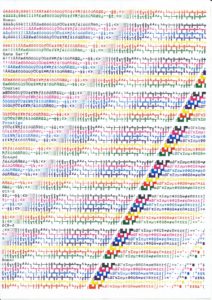Quick summary — Stop hunting for links inside long PDFs. This tool finds every URL and hidden annotation link in seconds, shows results by page, and exports a clean CSV you can use for research, audits, or migrations.
Why this matters
PDFs hide links in three places: visible text, clickable annotations, and document metadata/XMP. A simple text search misses annotations and metadata links. Extracting every link automatically saves hours, improves accuracy, and gives you a clean CSV ready for spreadsheets, crawlers, or QA workflows.
3 simple steps (no code)
1. Upload your PDF to the Link Finder Tool. Drag-and-drop your file into the PDF Link Extractor — the app reads the text layer and the PDF’s internal annotation objects.
2. Review parsed links. Results show page number and link target (href) so you can map links back to the page. Filter by domain, page, or link type.
3. Export CSV. One-click export produces a deduplicated CSV with columns like page and href.
What the link extractor finds (and why it’s useful)
- Visible text links — Links printed in the text layer (may be wrapped or line-broken).
- Annotation links — Clickable objects attached to a page (often invisible to plain-text copy).
- Metadata / XMP links — Links embedded in document metadata (author-supplied URLs or tool references). Catching all three gives you a complete inventory of link targets to verify, archive, or migrate.
Key features
- Extract URLs!
- One-click CSV export (page, href)
- Deduplication and metadata-noise filtering
- Raw annotation preview for debugging and archival use
- Privacy-minded: processed in your browser!
Practical use cases
- Researchers & academics: Bulk-harvest citations and build reference spreadsheets.
- Journalists: Quickly find source links inside leaked or public PDFs.
- SEOs & content managers: Audit backlinks and hidden redirects in published PDFs.
- Legal & compliance teams: Find policy links that affect disclosure obligations.
- Dev & migration teams: Export links to CSV for CMS imports or link-cleanup scripts.
Tips for scanned PDFs
Scanned PDFs without a text layer won’t reveal visible-text links. Run OCR first to add a searchable text layer, then re-run the extractor. Annotation and metadata links will be found regardless of OCR.
Short FAQ
Q: Will it find hidden annotation links?
Yes — the extractor reads annotation objects and pulls URI targets from /A, /URI, and /Dest entries.
Q: Can I export to CSV?
Yes — exports include page, href, type, rect, and raw preview for each annotation.
Q: Are files stored?
No — all files for this app never leave your computer.
Example workflow (researcher)
- Upload a conference proceedings document to the PDF Link Extractor Tool.
- Filter results for .edu and .gov to collect authoritative citations.
- Export CSV and import into your reference manager or spreadsheet for cleaning and annotation.


